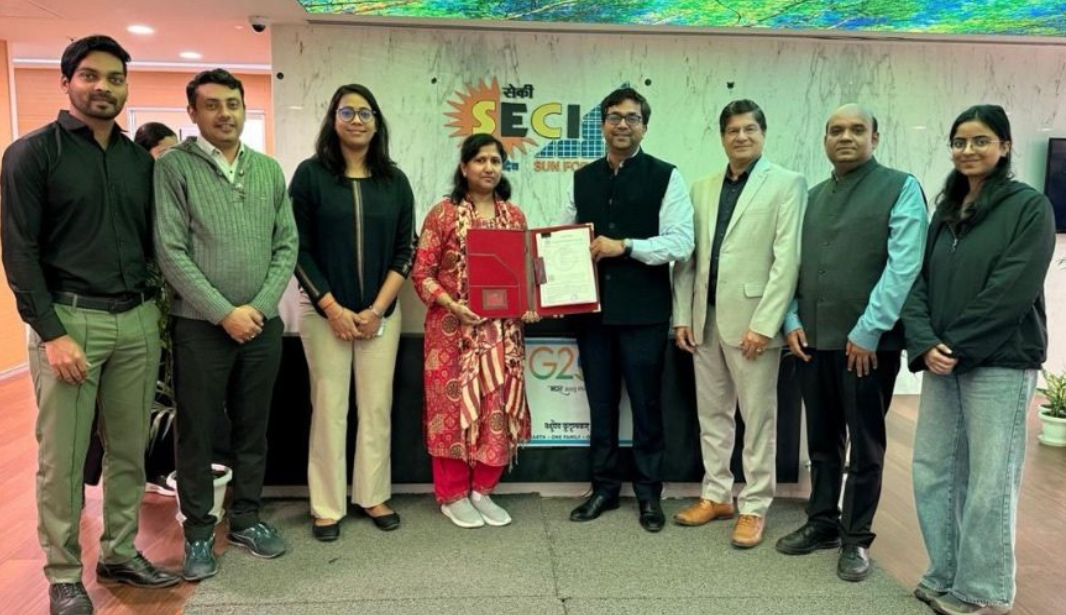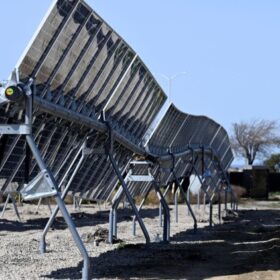India’s power sector is changing fast. Solar, wind and hydro are supplying a bigger share of electricity than ever before, and the country is starting to see whole days when clean energy dominates the grid. On 29 July 2025, renewables met just over half of India’s electricity demand in a single day, a record that shows how quickly this transformation is happening.
As renewable capacity rises, the question is no longer whether India can generate green power. The real challenge is whether the grid can absorb it smoothly and deliver it reliably when people actually need it. This is where battery energy storage systems, or BESS, are increasingly seen not as a luxury but as a core part of grid planning.
India’s renewable growth and its new grid challenges
India’s policies and investments have pushed rapid growth in solar and wind capacity. Recent analysis shows that renewables already account for around 45 percent of installed power generation capacity, with targets to push that share even higher by 2030.
However, this growth has created new operational problems. Solar generation peaks in the middle of the day and falls sharply in the evening, while demand often rises in the early evening hours. At the same time, the power ministry and grid operators have had to curtail solar output on some days when supply is higher than what the system can safely handle. In October 2025, solar curtailment reached about 12 percent overall, with some days seeing up to 40 percent of solar output prevented from entering the grid.
States like Rajasthan have seen several gigawatts of wind and solar generation curtailed due to transmission delays and periods of low demand, which underlines the limits of a grid without enough flexible resources.
What battery energy storage systems do for a grid
Battery energy storage systems store electricity when it is plentiful and release it when it is needed. They can charge during low demand or high generation periods and discharge during peaks, allowing the grid to better match supply with demand. The International Energy Agency notes that grid scale storage, including batteries, is critical to meet flexibility needs in a decarbonised electricity system where solar and wind are growing quickly.
In India, this flexibility is especially valuable. Storage can be installed near large solar parks, near big cities, or at grid bottlenecks. Analysis from academic and policy studies suggests that storage will be most valuable in regions that combine high solar capacity with large loads and limited peaking generation, such as Gujarat, Rajasthan, Maharashtra, Uttar Pradesh, Andhra Pradesh and Telangana.
Tackling curtailment and peak demand
One of the strongest arguments for BESS in India is its ability to reduce renewable curtailment and manage sharp evening demand ramps. When solar output is high and demand is moderate, batteries can store the surplus rather than letting it go unused. That stored power can then be dispatched during evening peaks, reducing the need for fossil fuel based peaking plants and making better use of existing renewable assets.
Recent news coverage shows that curtailment has already become a serious issue in some months, and industry groups have urged the government to accelerate both transmission and battery storage development to deal with oversupply and maintain grid stability. By shifting energy from the middle of the day to the evening, BESS directly addresses the timing mismatch between renewable generation and consumer demand, which is central to making renewable rich grids work.
Strengthening stability and using the network better
Beyond daily shifting, BESS supports grid stability in more technical ways. Batteries can respond in milliseconds to changes in frequency or voltage by injecting or absorbing power, which helps prevent wider disturbances. This fast response service is something that traditional thermal plants cannot always provide at the same speed. International assessments repeatedly highlight storage as a key tool for maintaining secure and stable power systems as renewable penetration increases.
Storage can also help the network operate more efficiently. By placing BESS near congested transmission corridors or load centres, grid operators can ease pressure on lines during high generation periods and reduce the need for immediate large scale transmission upgrades. Recent projects such as the planned Pugal Solar Park in Rajasthan, which combines a multi gigawatt solar park with a multi gigawatt hour battery system, show how co located storage is being used to improve energy self reliance and network utilisation.
Policy signals making BESS central to planning
Indian policymakers have begun to formally recognise how important storage is. A national framework released by the Ministry of Power projects that by 2047 the country may need about 230 GW of BESS, with storage capacity of around 1,840 GWh, alongside significant pumped storage hydro, to support a high renewable grid.
More near term projections from the Ministry of Power estimate the need for roughly 41 GW and 236 GWh of BESS by 2031-32. To move in this direction, around 12.2 GWh of BESS tenders have already been announced, with about two thirds of that coming in 2025 alone.
On the policy side, India has extended a waiver on inter-state transmission system charges for energy storage projects co-located with renewables until June 2028 and approved a scheme to support 30 GWh of BESS. This reduces costs for developers and encourages integration of storage directly with solar and wind plants. SECI has also issued dedicated tenders and standard agreements for standalone storage and renewable plus storage projects, making BESS a formal part of procurement.
Several states are moving independently as well. Gujarat, for instance, has become the leading state in installed renewable capacity and has signed agreements to develop battery energy storage to supply round the clock clean energy to industries that cannot set up their own captive solar plants.
Economics and global cost trends
The case for BESS is also getting stronger because costs are coming down. The International Energy Agency’s recent work on batteries and secure energy transitions indicates that average battery storage capital costs could fall by around forty percent between 2023 and 2030. Other analyses focused on India highlight that solar plus batteries are becoming competitive with new coal plants in several regions, especially as battery prices fall and project designs improve.
At the same time, India currently has only a small amount of grid scale battery storage installed relative to what will be needed. One recent assessment noted that while installed BESS capacity is on the order of a few hundred megawatts today, the medium term requirement runs into hundreds of gigawatt hours by the early 2030s. This gap between installed capacity and projected need is a major reason why storage is now seen as a pressing priority rather than a distant idea.
Gujarat’s leadership in renewable growth and energy storage
Gujarat has become one of India’s strongest examples of how large-scale renewable energy and battery storage can work together to support a stable grid. The state now ranks among the highest in the country for installed renewable capacity, crossing more than 35 gigawatts as of early 2025. Its policies have also begun integrating storage directly into project planning.
The Standard Operating Procedure issued by the Gujarat Energy Development Agency allows off grid and hybrid renewable projects to be approved with or without storage, signalling that storage is now a recognised part of the state’s clean energy framework. At the same time, Gujarat is developing some of the country’s largest renewable parks in the Kutch region, where major developers are building multi gigawatt hour battery storage systems to smooth generation and improve grid flexibility. One of the biggest examples is the large battery installation planned at the Khavda renewable park, designed to store excess solar and wind energy and release it when demand rises.
Together, these efforts show that Gujarat is not only expanding renewable capacity but also investing in the storage infrastructure required to use that energy effectively, making the state a leader in renewable integration and future grid planning.
Why BESS is moving from optional to essential
Taken together, these trends explain why BESS is becoming non-negotiable for renewable rich grids in India. The country is already experiencing days when renewables supply more than half of total electricity, and the system is facing real instances of curtailment and transmission stress. International and domestic studies consistently show that storage is one of the most effective tools to integrate high shares of variable renewables while keeping the grid stable and reliable. Industry articles that focus specifically on India now describe BESS as a key enabler of round the clock renewable power, able to store surplus energy in the day and release it in the evening or during demand spikes.
With clear government projections for large scale storage, evolving tenders and financial incentives, and visible operational challenges on the grid, batteries are moving into the centre of India’s energy transition plans. Rather than being an add on, BESS is increasingly the technology that allows India to turn high renewable capacity into dependable, round the clock clean power.
The views and opinions expressed in this article are the author’s own, and do not necessarily reflect those held by pv magazine.
This content is protected by copyright and may not be reused. If you want to cooperate with us and would like to reuse some of our content, please contact: editors@pv-magazine.com.








By submitting this form you agree to pv magazine using your data for the purposes of publishing your comment.
Your personal data will only be disclosed or otherwise transmitted to third parties for the purposes of spam filtering or if this is necessary for technical maintenance of the website. Any other transfer to third parties will not take place unless this is justified on the basis of applicable data protection regulations or if pv magazine is legally obliged to do so.
You may revoke this consent at any time with effect for the future, in which case your personal data will be deleted immediately. Otherwise, your data will be deleted if pv magazine has processed your request or the purpose of data storage is fulfilled.
Further information on data privacy can be found in our Data Protection Policy.